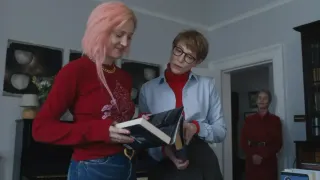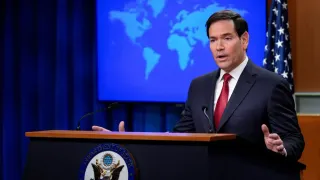July 26, 2014
Panel Debunks Stereotype of LGBT Affluence
Kilian Melloy READ TIME: 4 MIN.
The myth of gay affluence serves as a harmful exaggeration, according to speakers of a recent Horizons Foundation panel discussion hosted at Merrill Lynch Private Bank.
Rather than accept a popular stereotype that gays and lesbians are among the wealthiest demographics in the nation, local community leaders described a reality for the LGBT population that includes significant poverty, discrimination, and homelessness.
Roger Doughty, executive director of Horizons Foundation, said this myth is a powerful one, especially in the hands of "our opponents," who use it as part of their "special rights" argument for members of the LGBT community.
"It goes along with that sense of, 'Oh, this is a privileged class of people,' " Doughty explained at the July 17 panel, which was attended by about 50 people. "These are people who have money, they have access, they have power, and therefore are not worthy objects of, say, a sympathetic hearing in a courtroom, or legislative action or anything else like that."
But Doughty said the myth of LGBT affluence has become equally harmful inside the LGBT community, "not only because it's not true, but also because it is also separating ourselves one from another ... [by] not seeing the whole segment of the community that are dealing with a very different reality."
The myth of gay wealth was born out of marketing surveys, according to a story earlier this year in the Atlantic.
"Marketing firms conducted surveys to try to show not just affluence, but disproportionate levels of brand loyalty were a hallmark of gays and lesbians," wrote Nathan McDermott. "In the media, gay men became well-to-do, cosmopolitan, and voraciously consumeristic. In 2012, Experian, a national marketing firm, released a business report claiming that the average household income of a married or partnered gay man is nearly 20 percent more than a straight married or partnered man ($116,000 compared to $94,500)."
Gary J. Gates, Ph.D., a Williams Distinguished Scholar at the Williams Institute at UCLA School of Law, laid the groundwork for dispelling the notion of LGBT affluence through hard data.
"As a broad group, I will tell you, it's not necessarily clear per se that LGBT people in general are economically disadvantaged, but there's no evidence of affluence," Gates told attendees. "And what is critically important [to understand] is there are subgroups within the LGBT population that are incredibly disadvantaged."
In addition, Gates said that demographic data representing racial and ethnic minority subgroups in the LGBT population also reveal high levels of economic disadvantage.
"So again, the simple message is that we don't see in all these data sources any evidence of overall affluence," he said. "And certainly there are many groups in the LGBT community who not only just don't show affluence, but show very serious disadvantages economically."
Bevan Dufty, the gay director of Housing Opportunity, Partnerships and Engagement for Mayor Ed Lee, said he was shocked to learn that 29 percent of the 7,350 people identified as LGBT in the biennial San Francisco Homeless Point-In-Time Count and Survey that was released last June.
"That is a shocking number," Dufty said. "That basically means for the people that I [reach out to] that are LGBT ... it means they are a relationship breakup, a job loss, or a housing loss or eviction away from being homeless."
Dufty explained how overwhelming it is to have overcome homophobia in the community only to succumb to "homeless-phobia" in his own city.
"It shows how we are so vulnerable in this city that we helped to build, this city that prides itself on its diversity, and having the queer focus we have ... I don't want it to be lost on us," he said.
Dufty quoted numbers from the city's 2013 count. Of the 6,346 people who are homeless in San Francisco, not counting 914 youth that make up the 7,350 total mentioned earlier, 3,400 are on the street, 1,800 are in jail, hospitals or other treatment programs, and 1,145 people are in shelters. Of the 3,400 on the street, about 2,000 are chronically ill. These individuals have been homeless for one year or more, or they've had multiple episodes of homelessness, according to Dufty.
Sherilyn Adams, executive director for Larkin Street Youth Services, said her organization, which serves runaway and homeless youth, estimates about 5,400-5,700 young people, between the ages of 12 and 24, in San Francisco are either homeless or at-risk for homelessness.
According to Adams, the only pathway out of homelessness for any group is to significantly improve education and employment - in addition to improved housing policies.
"I think with all the statistics and what has been said employment discrimination continues," she said. "Employment discrimination for youth is high, and employment discrimination particularly for trans youth is high. So we need to work really closely with young people to deepen their education levels as well as to help them around workforce development - that's both basically job readiness and job support."
Horizons' philanthropy series panel discussion was moderated by Francisco O. Buchting, Ph.D., director of grantmaking and community initiatives for the Horizons Foundation.
The organization's next session, "Transcending the Divide: Gaining a Better Understanding of Transgender Issues," takes place August 21. More information is available at www.horizonsfoundation.org.






